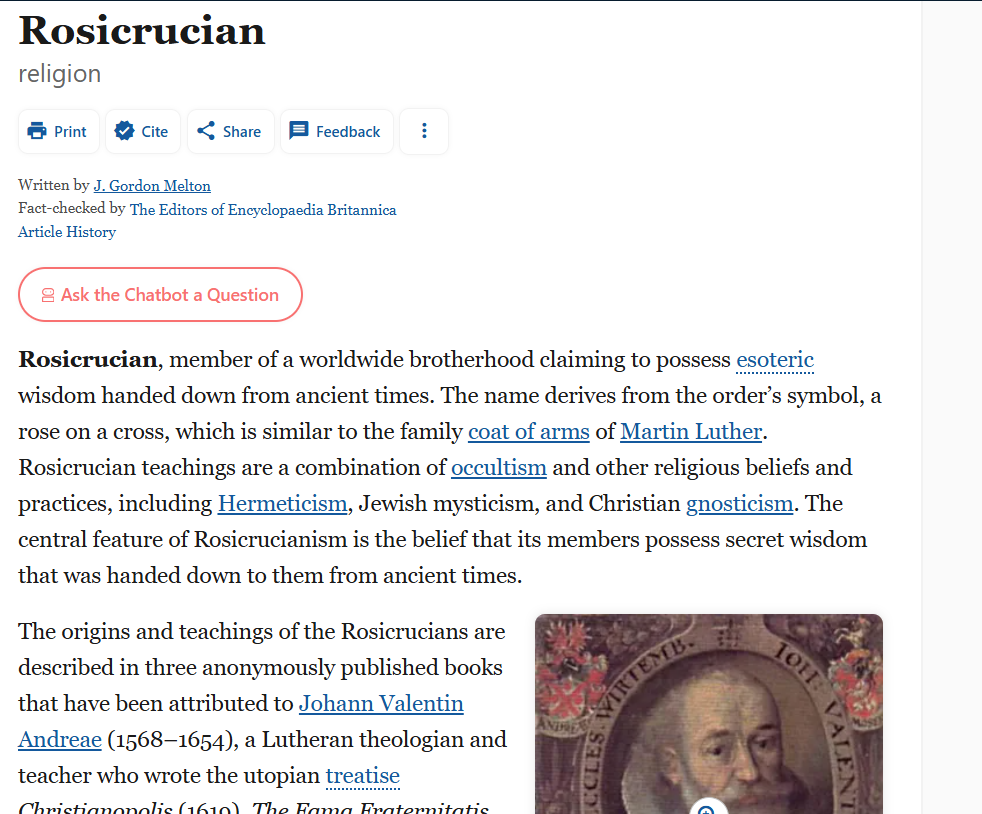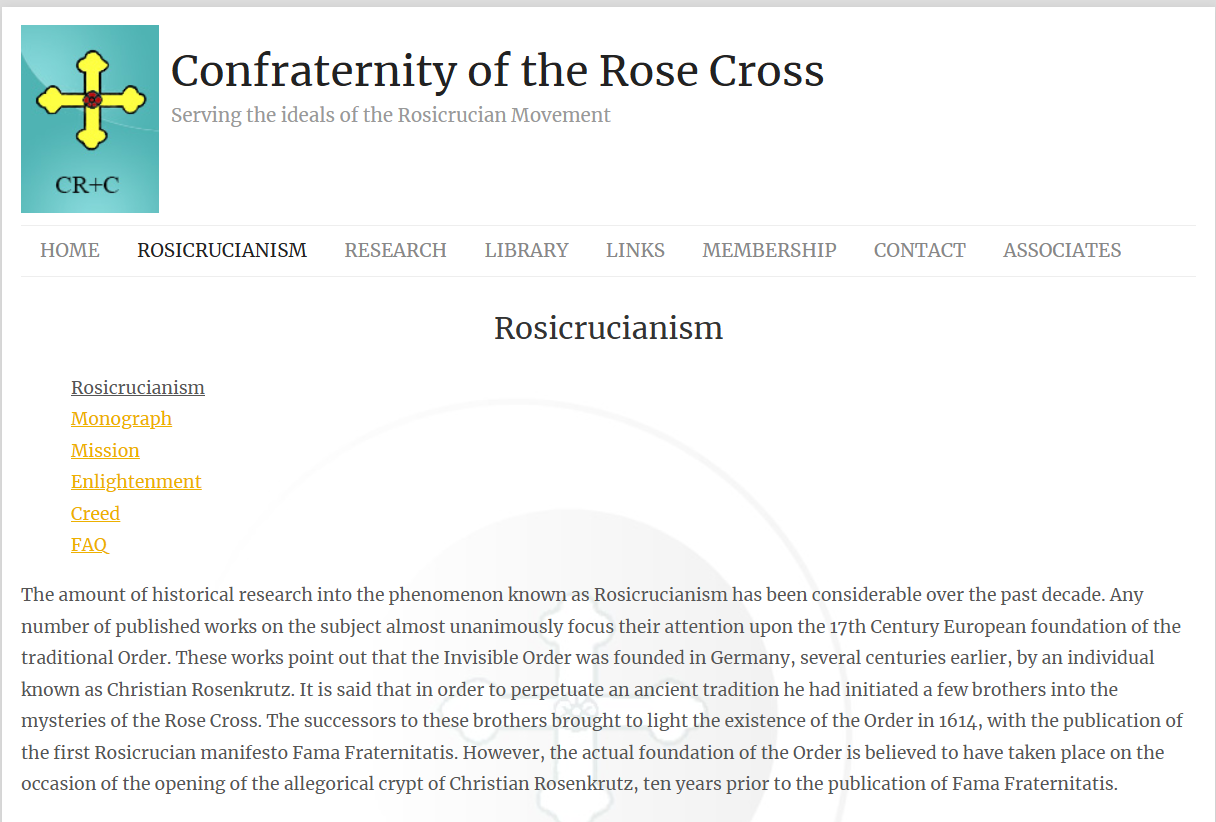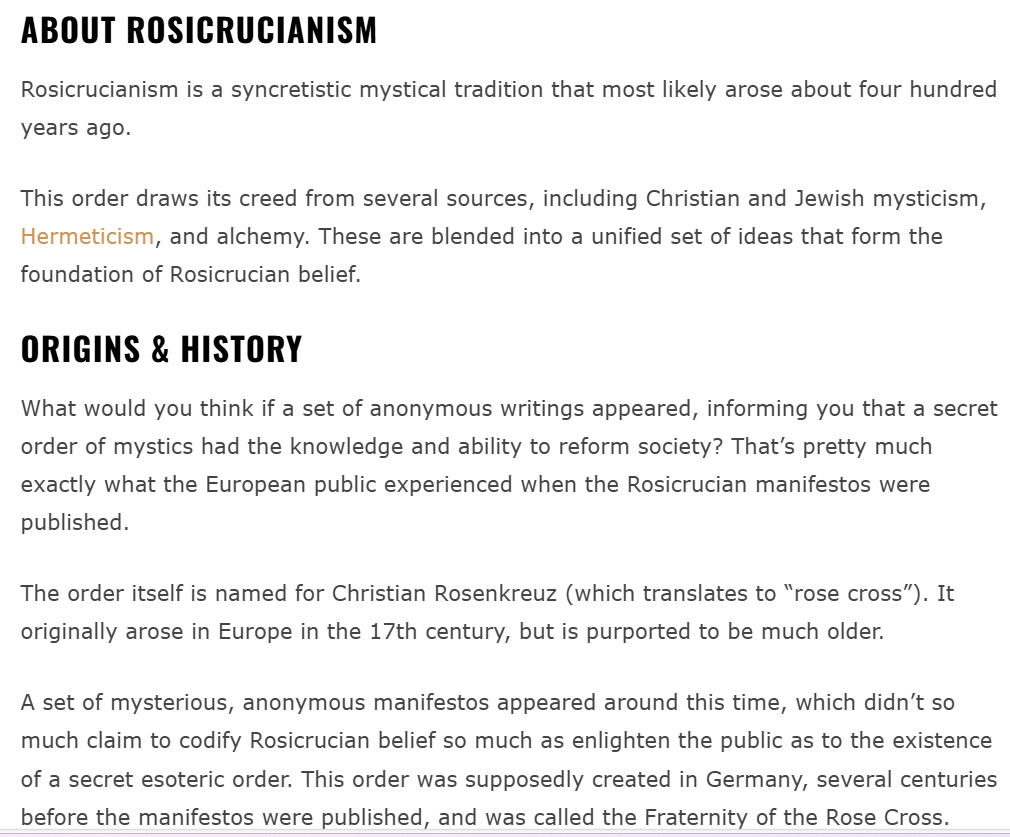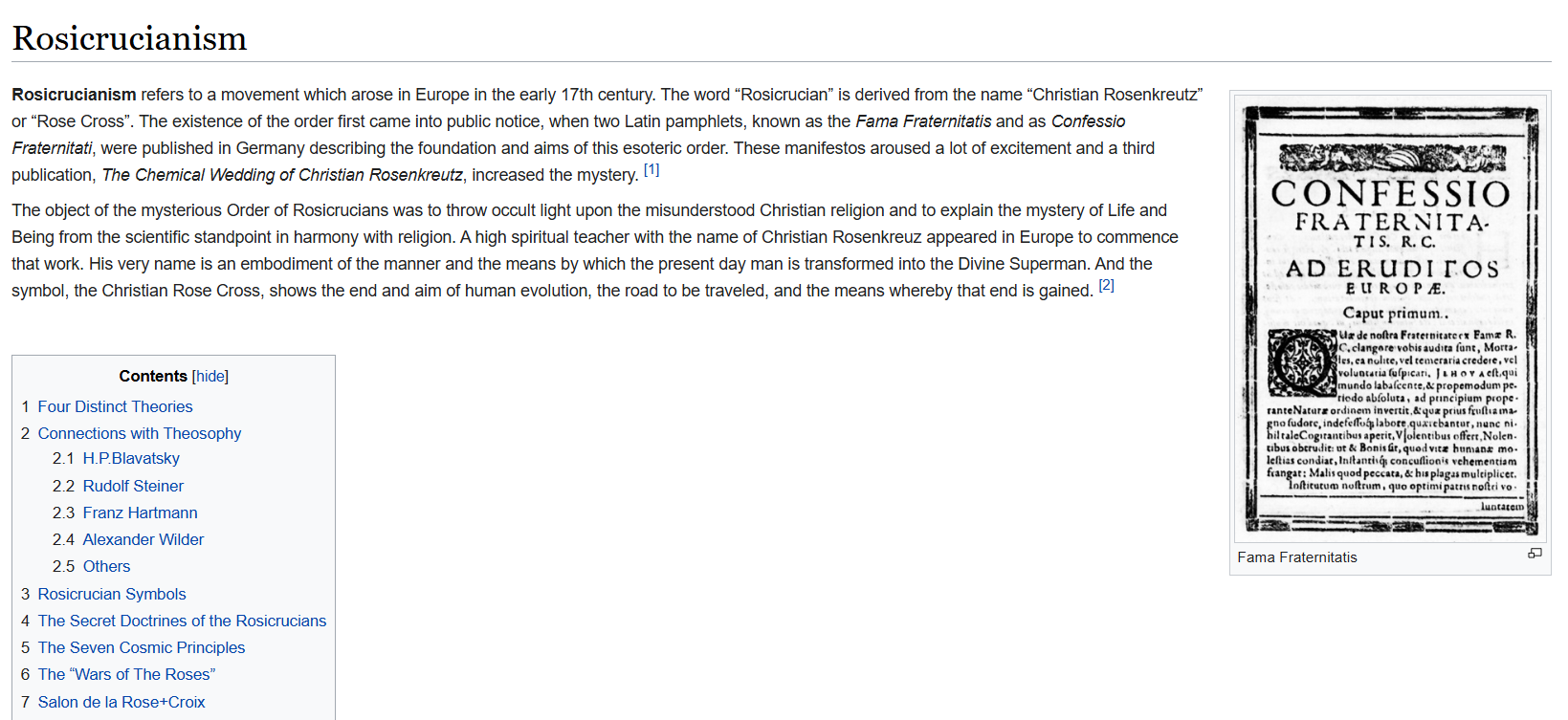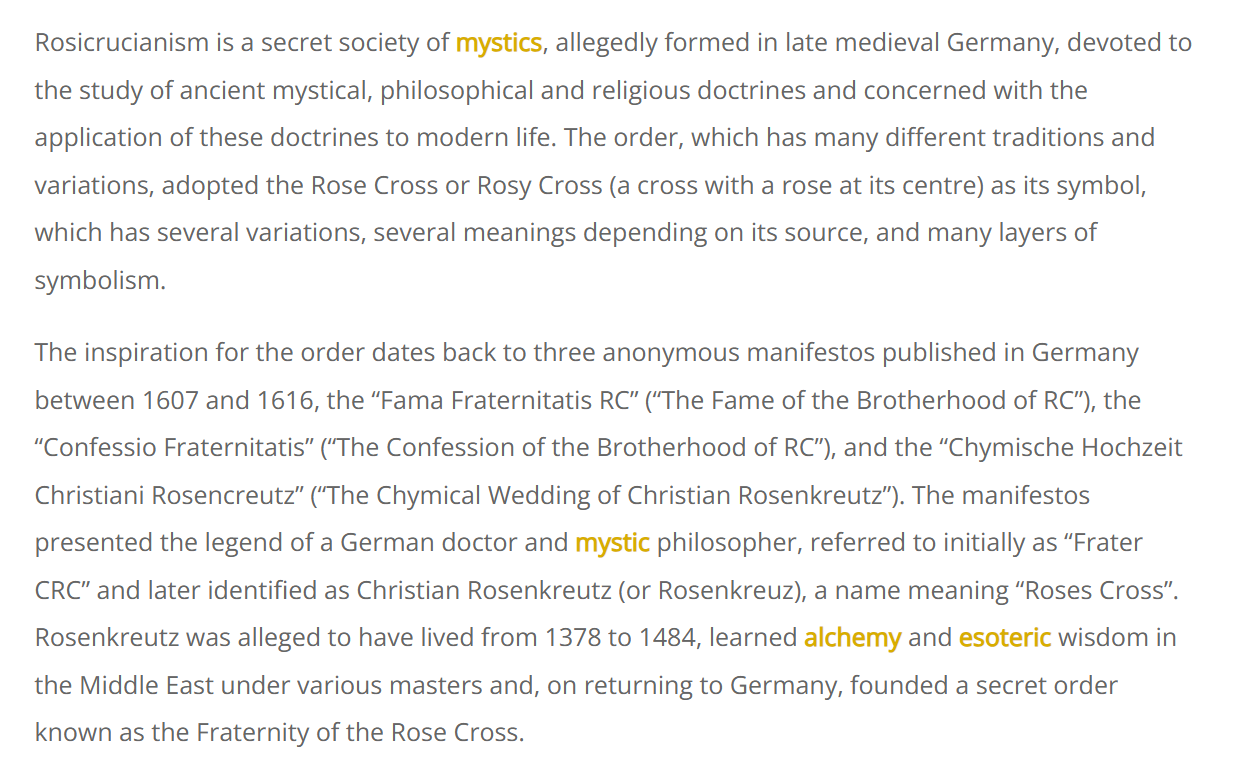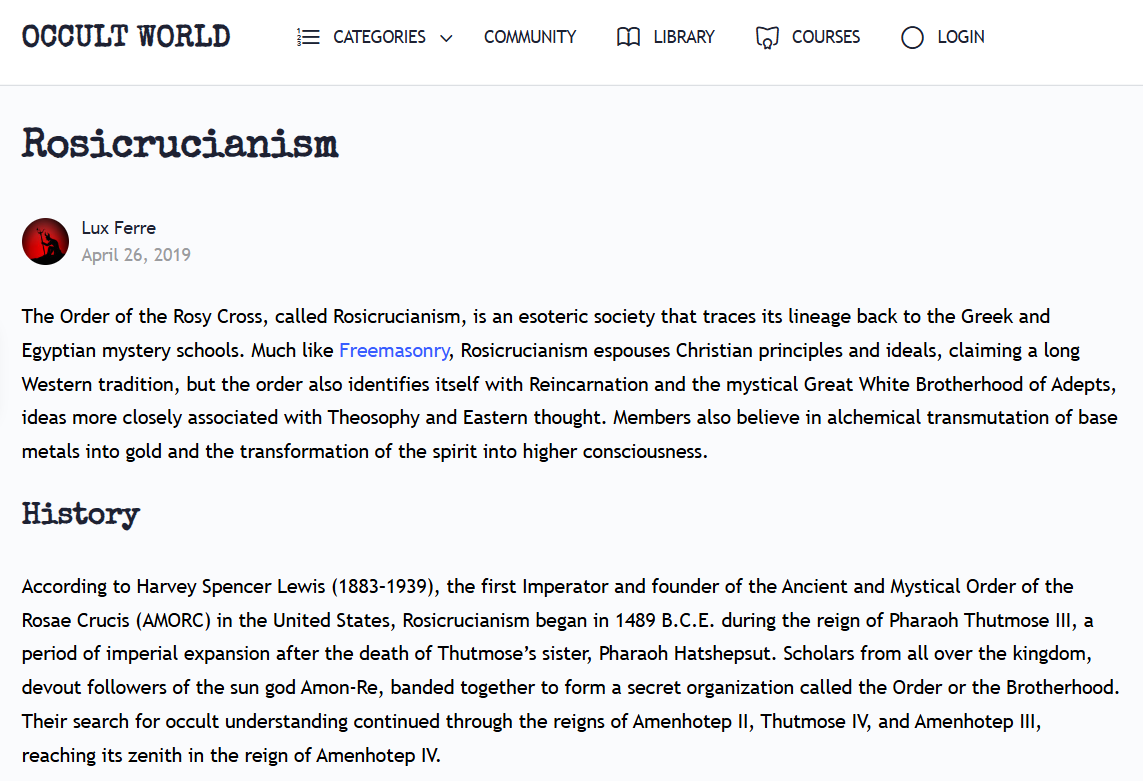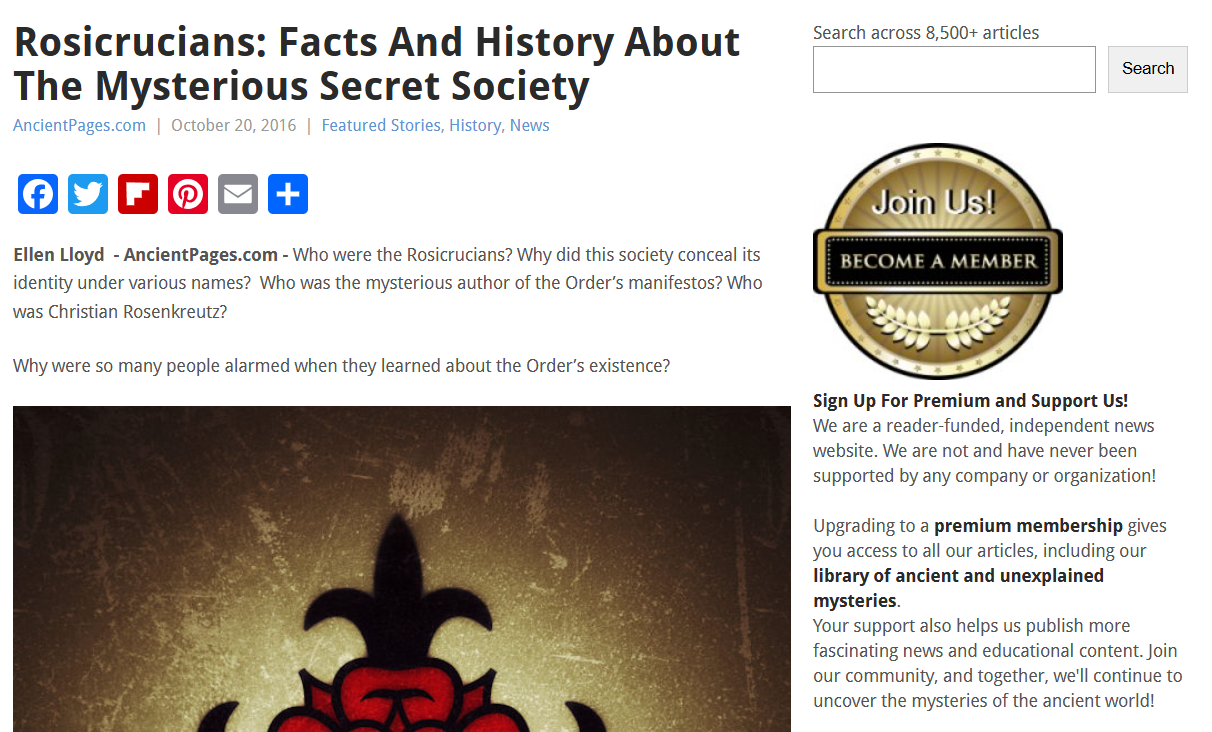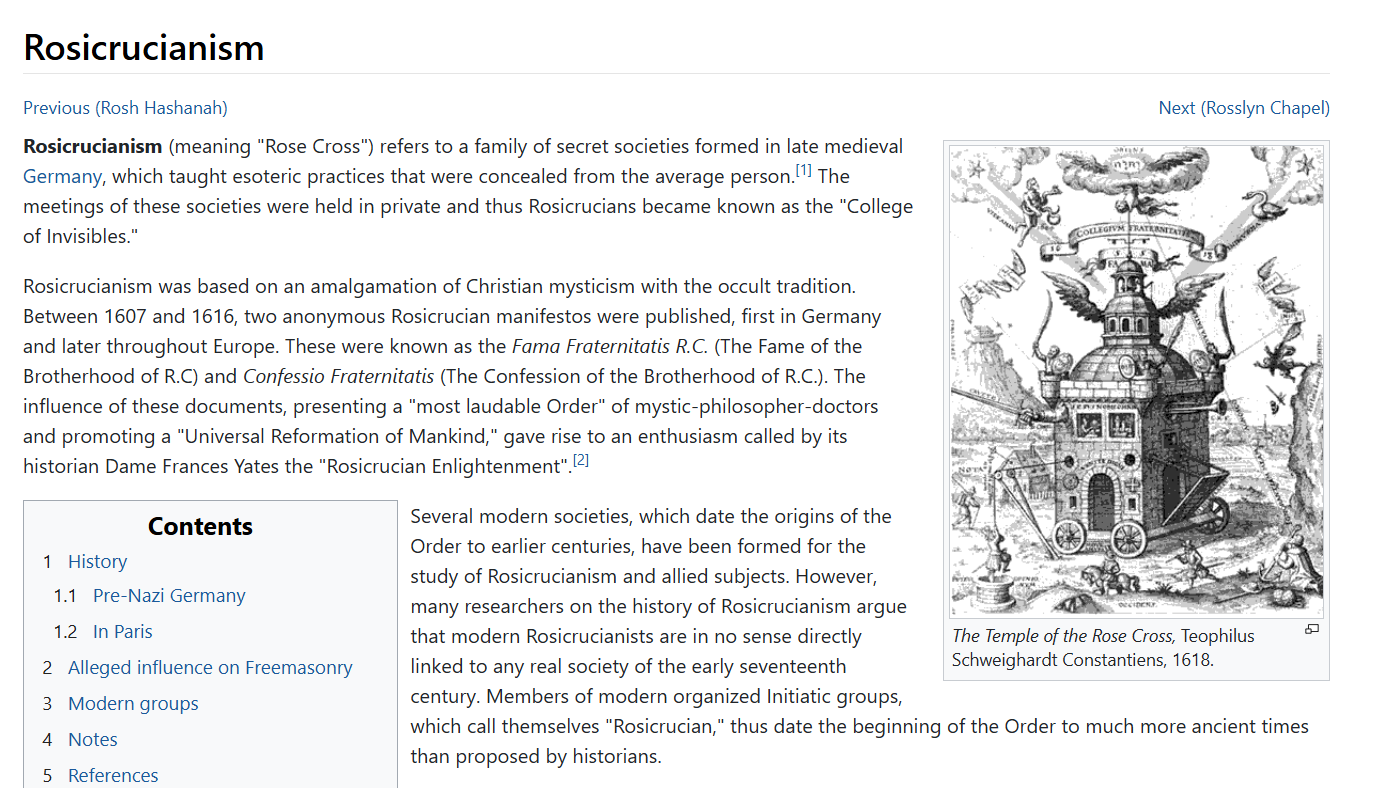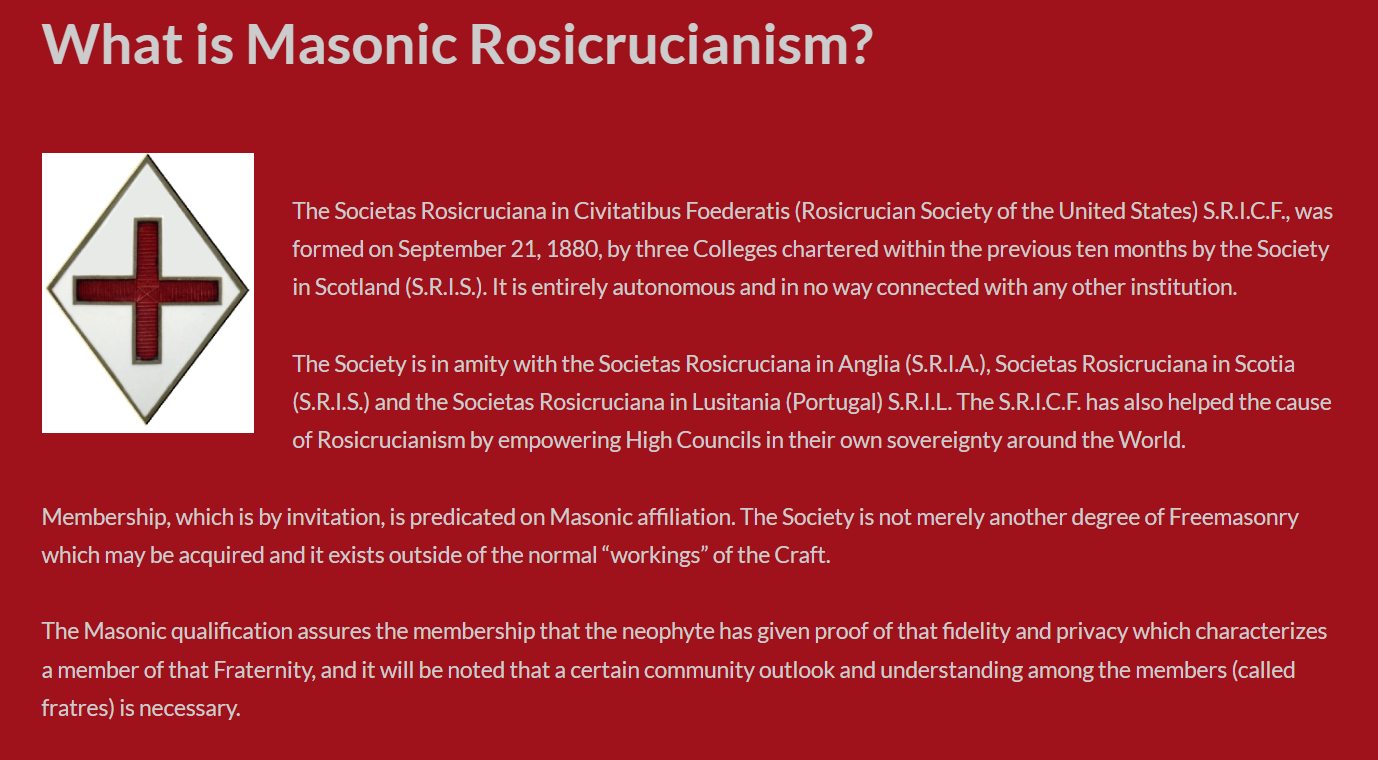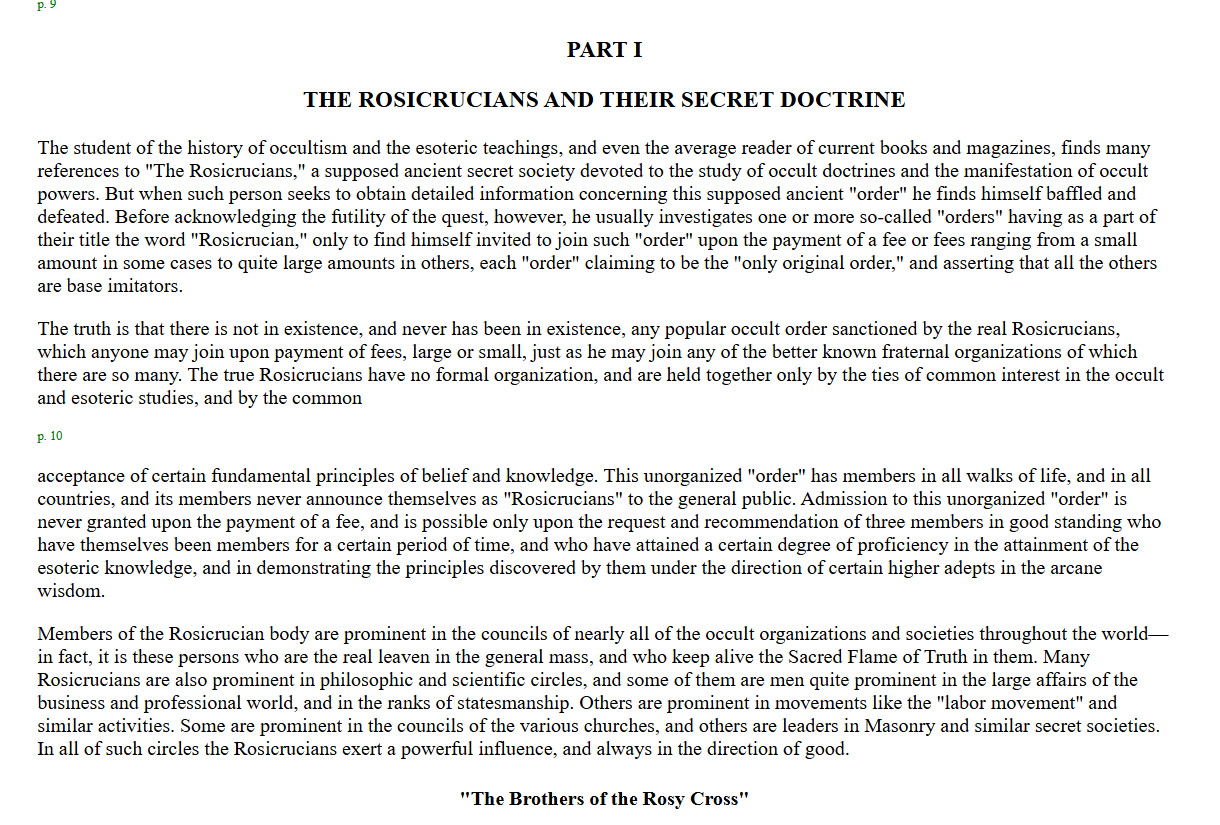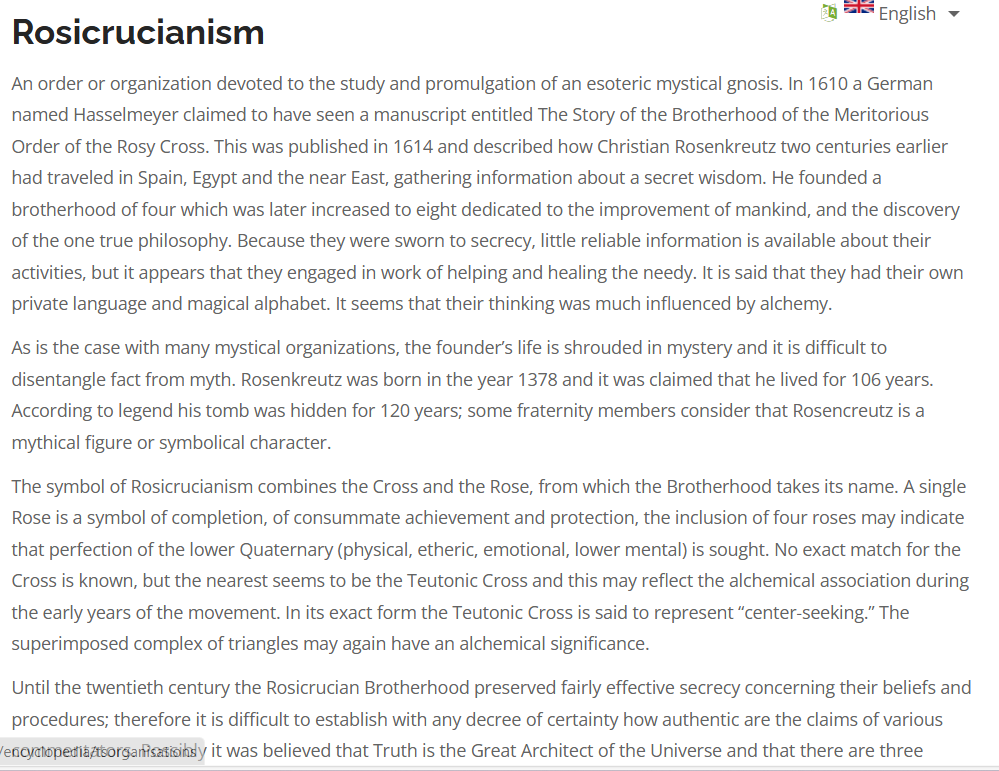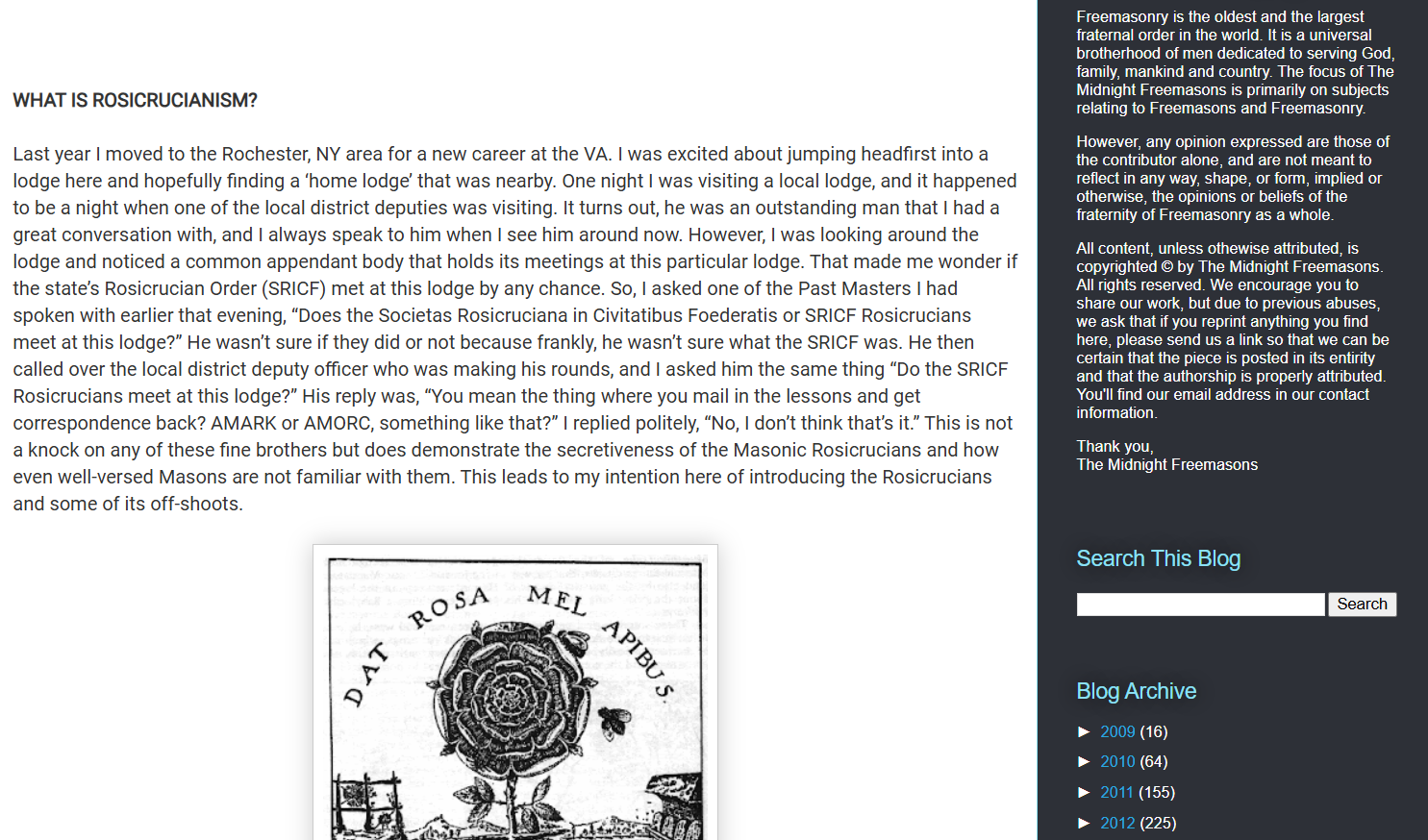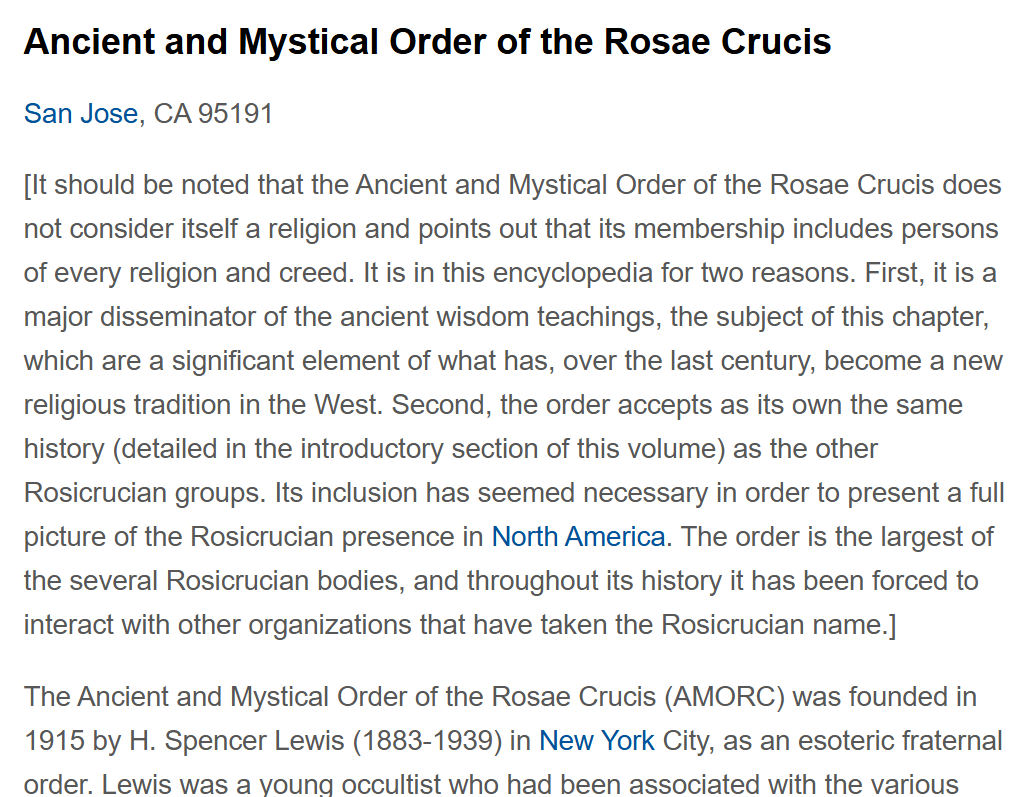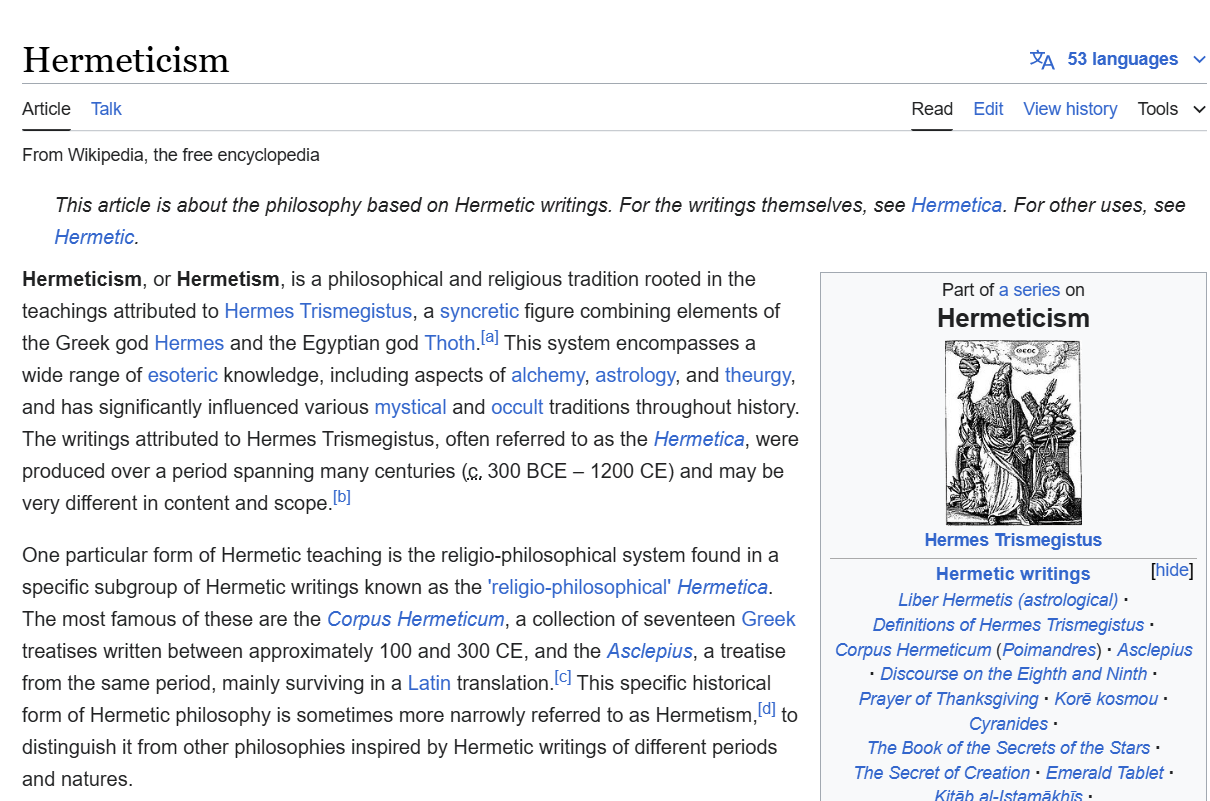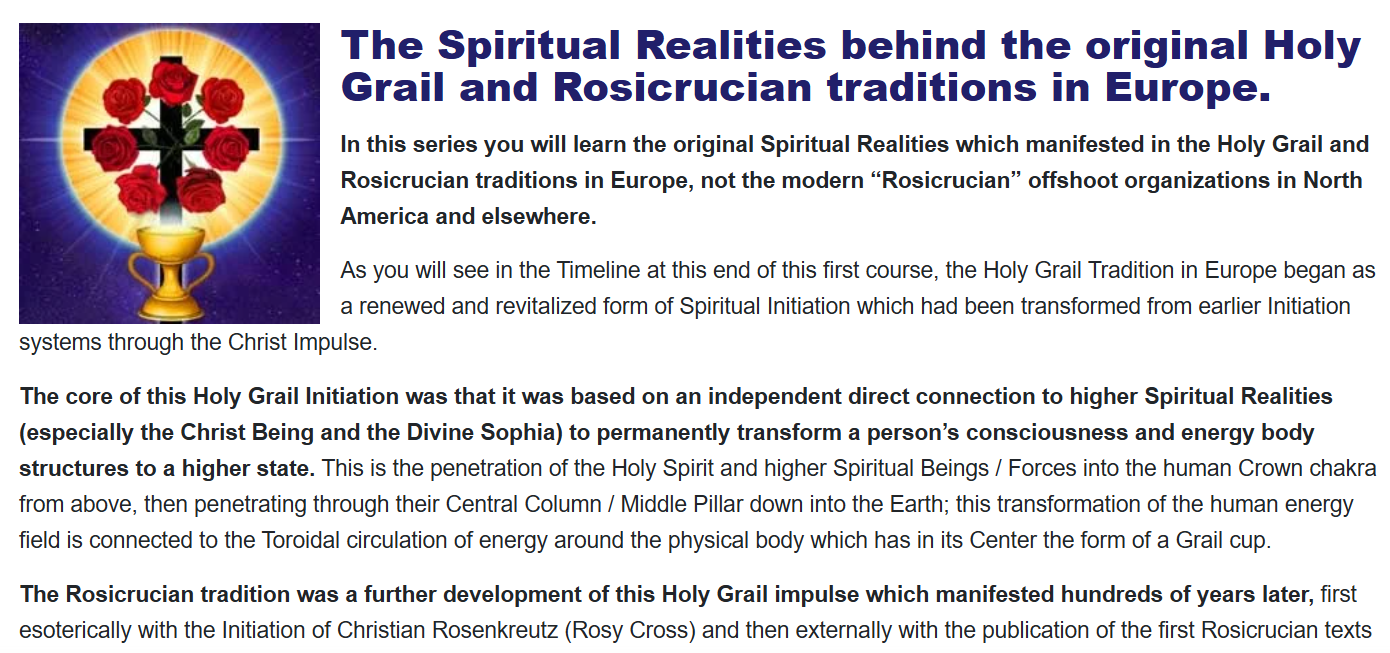ORDER OF THE ROSY CROSS - ROSICRUCIANISM
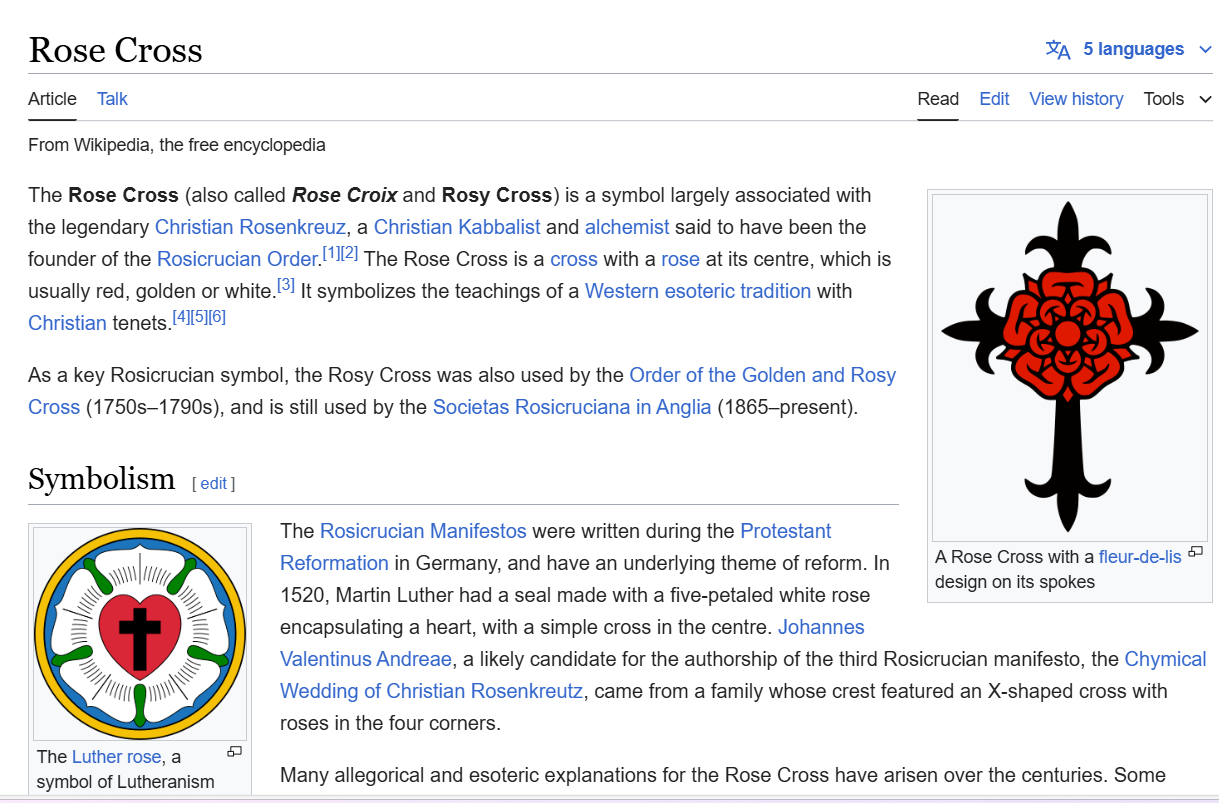
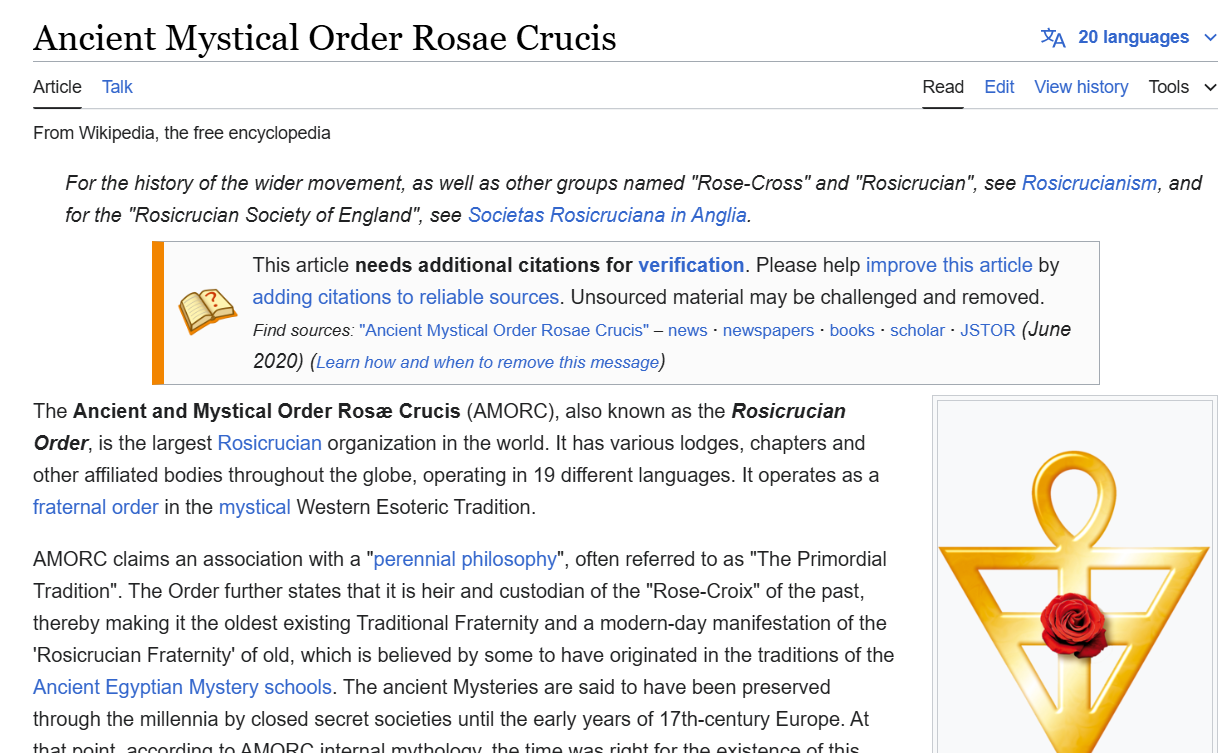
The Rosicrucian movement, of which the Rosicrucian Order, AMORC, is the most prominent modern representative, has its roots in the mystery traditions, philosophy, and myths of ancient Egypt dating back to approximately 1500 BCE. In antiquity the word “mystery” referred to a special gnosis, a secret wisdom. Thousands of years ago in ancient Egypt select bodies or schools were formed to explore the mysteries of life and learn the secrets of this hidden wisdom. Only sincere students, displaying a desire for knowledge and meeting certain tests were considered worthy of being inducted into these mysteries. Over the course of centuries these mystery schools added an initiatory dimension to the knowledge they transmitted. ---
Pharaoh Tutmoses III, who ruled Egypt from 1500 to 1447 BCE, organized the first esoteric school of initiates founded upon principles and methods similar to those perpetuated today by the Rosicrucian Order, AMORC. Decades later Pharaoh Amenhotep IV was initiated into the secret school. This most enlightened pharaoh—history’s first monotheist—was so inspired by the mystery teachings that he gave a completely new direction to Egypt’s religion and philosophy. He established a religion which recognized the Aton, the solar disk, as being the symbol of the sole deity—the foundation of life itself, the symbol of Light, Truth, and Joy—and changed his name to Akhnaton to reflect these new ideas. And although the earlier religion was later reestablished, the mystical idea was put forth in human consciousness, and its flame never died.
Centuries later, Greek philosophers such as Thales and Pythagoras, the Roman philosopher Plotinus, and others, journeyed to Egypt and were initiated into the mystery schools. They then brought their advanced learning and wisdom to the Western world. Their experiences are the first records of what eventually grew and blossomed into the Rosicrucian Order. The name of the Order, as it is now known, was to come much later. However, the Rosicrucian Order always perpetuated its heritage of ancient symbolism and principles. ---
Early European Beginnings
It was in the time of Charlemagne (742-814) that the French philosopher Arnaud introduced the mystical teachings into France, and from there they spread to much of Western Europe. Throughout medieval Europe mystical knowledge was often necessarily couched in symbolism or disguised and hidden in the love songs of Troubadours, the formularies of Alchemists, the symbolical system known as the Kabbalah, and the rituals of Orders of Knighthood.
While much of medieval Europe lay in darkness, the highly advanced Arab civilization preserved a large body of the mystical teachings through texts translated directly from the great libraries of the ancient world, such as Egypt’s Alexandria Library. Philosophy, medicine, mathematics, and alchemy were all important subjects preserved in these libraries and later transmitted to Europe by way of the Arabs. ---
Crossing the Atlantic
In the late seventeenth century, following a plan originally proposed by Francis Bacon in The New Atlantis, a colony of Rosicrucian leaders was organized to establish the Rosicrucian arts and sciences in America. In 1694 Rosicrucian settlers made the perilous journey across the Atlantic Ocean in a specially chartered vessel, the Sarah Maria, under the leadership of Johannes Kelpius, master of a Rosicrucian Lodge in Europe. Landing in Philadelphia, the colonists established their first settlement and later moved further west in Pennsylvania to Ephrata. These Rosicrucian communities made valuable contributions to the newly emerging American culture in the fields of printing, philosophy, the sciences, and arts. Later such eminent Americans as Benjamin Franklin, Thomas Jefferson, and Thomas Paine were intimately connected with the Rosicrucian community. In fact, many Rosicrucians played an important role in the great alchemical and social process leading to the founding of a new nation.
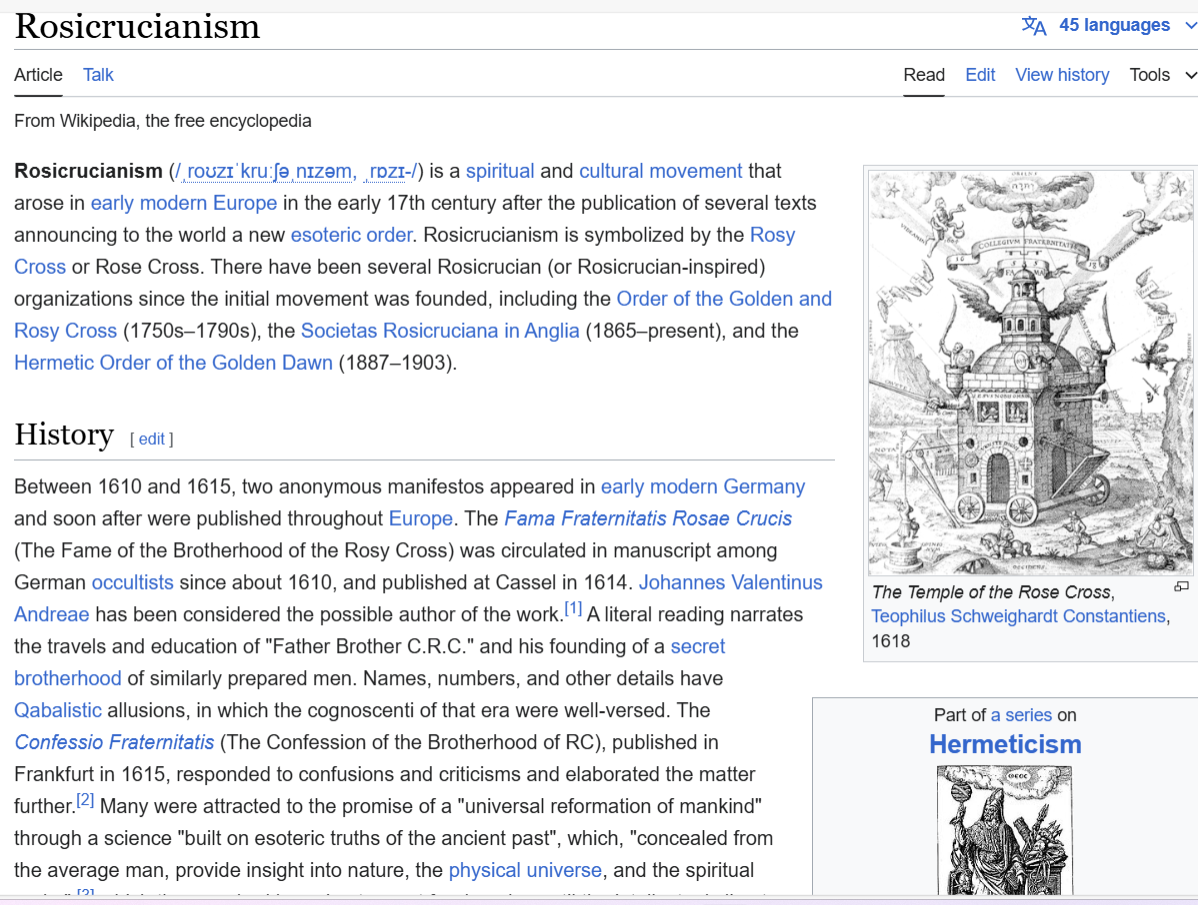
Between 1614 and 1617, three anonymous manifestos were published, first in Germany and later throughout Europe.[6] These were the Fama Fraternitatis RC (The Fame of the Brotherhood of RC, 1614), the Confessio Fraternitatis (The Confession of the Brotherhood of RC, 1615), and the Chymical Wedding of Christian Rosicross anno 1459 (1617).
The Fama Fraternitatis presents the legend of a German doctor and mystic philosopher referred to as "Father Brother C.R.C." (later identified in a third manifesto as Christian Rosenkreuz, or "Rose-cross"). The year 1378 is presented as being the birth year of "our Christian Father", and it is stated that he lived 106 years. After studying in the Middle East under various masters, possibly adhering to Sufism,[7] he was unable to spread the knowledge he had acquired to prominent European scientists and philosophers. Instead, he gathered a small circle of friends/disciples and founded the Rosicrucian Order (this can be deduced to have occurred around 1407).
During Rosenkreuz's lifetime, the order was said to comprise no more than eight members, each a doctor and "all bachelors of vowed virginity."[8] Each member undertook an oath to heal the sick without accepting payment, to maintain a secret fellowship, and to find a replacement for himself before he died. Three such generations had supposedly passed between c. 1500 and c. 1600: a time when scientific, philosophical, and religious freedom had grown so that the public might benefit from the Rosicrucians' knowledge, so that they were now seeking good men.[9]
The manifestos were, and continue to be, not taken literally by many but rather regarded either as hoaxes or as allegorical statements. They state: "We speak unto you by parables, but would willingly bring you to the right, simple, easy, and ingenuous exposition, understanding, declaration, and knowledge of all secrets."[10]
The first Rosicrucian manifesto was influenced by the work of the respected hermetic philosopher Heinrich Khunrath, of Hamburg, author of the Amphitheatrum Sapientiae Aeternae (1609), who was in turn influenced by John Dee, author of the Monas Hieroglyphica (1564).[1]: 51 The invitation to the royal wedding in the Chymical Wedding of Christian Rosenkreutz opens with Dee's philosophical key, the Monas Hieroglyphica symbol. The writer also claimed the brotherhood possessed a book that resembled the works of Paracelsus. Adam Haslmayr a friend of Karl Widemann wrote him a letter about Rosicrucian people who revealed the Theophrastiam[clarification needed] 24 December 1611.[11]
In his autobiography, Johann Valentin Andreae (1586–1654) claimed that the anonymously published Chymical Wedding of Christian Rosenkreutz was one of his works, and he subsequently described it as a ludibrium. In his later works, he makes alchemy an object of ridicule and places it along with music, art, theater, and astrology in the category of less serious sciences. According to some sources, his role in the origin of the Rosicrucian legend is controversial.[12] But according to others, it was generally accepted.[13]
In the early 17th century, the manifestos caused excitement throughout Europe by declaring the existence of a secret brotherhood of alchemists and sages who were preparing to transform the arts and sciences, and religious, political, and intellectual landscapes of Europe. Wars of politics and religion ravaged the continent. The works were re-issued several times, followed by numerous pamphlets, favorable or otherwise. Between 1614 and 1620, about 400 manuscripts and books were published which discussed the Rosicrucian documents.
The peak of the "Rosicrucianism furore" was reached when two mysterious posters appeared on the walls of Paris in 1622 within a few days of each other. The first said "We, the Deputies of the Higher College of the Rose-Croix, do make our stay, visibly and invisibly, in this city (...)", and the second ended with the words "The thoughts attached to the real desire of the seeker will lead us to him and him to us."[14]
